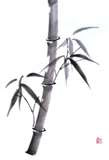National Museum held very good talks. This month it is about Komodo Dragon which was first sighted by European in 1910. The first official documentation of the species existence was in 1912.
That time the native in Indonesian call it the land crocodile. As it was found on Komodo, it was given the name Komodo Reptile, which could weigh up to 100kg. The initial report was that it was 7 m long, though later scientific study done confirmed that the animal is about 3 m in length at most. There were other myths circulating about the reptile around that time, such as it was deaf and a sort of dinosaur.
It became the 'Dragon' due to 'play-up' on its name to excite people's imagination and demand. Yes - demand for the Komodo dragon was very high with it fetching as much as $10k per reptile. In 1920 to 1930 days - this was a hugh sum of money. The demand was mainly from Zoo and Natural Museum around the world. It was a great money generator. According to the speaker, the money collected from public entry fee for the few months before the Komodo died was enough to upkeep the facility for a year !
Unfortunately the Komodo did not survive well in captivity. Most of the time more than half of them died and those that arrived at foreign zoos, normally died within the next few months. Seems like London Zoo had special environment created with heated rocks for the Komodo to rest on to increase the survival rate.
There was so much fascination with the Komodo Dragons that luckily the Dutch administrator of Indonesian at that time had the foresight to pass a law to protect them in 1932. Its faith was also saved by the War World as it was left alone for around 15 years before interest in it rekindled. Its past status was like that of the panda in recent years - making headline news and public flocking to see it at the zoo. Komodo Dragon would be presented to important foreign delegate as an official gift. Seems like our MM Lee KY was presented with one some years back.
Currently there are about 4000 Komodo Dragons in the world. Most of them are located in Komodo and 2 other areas in Indonesian.
Other interesting insight from the talk is that Singapore was very active in wild life trade back in 1930s. Official records shown that as many as 300,000 animals were handled by Singapore. An American by the name of Frank Buck lived in S'pore during that time in Katong area. He was a hunter and animals trader. In his book, he mentioned that he had 10,000 animals in his compound. At that time, Bird of Paradise were in demand for their beautiful feathers which were used to make ladies' hats.
The original history of zoo shared a common feature with Botanic Gardens / Parks around the world - they were all started by private collectors. They were usually the Royal Families and other rich and elite.
Thus, during the 1920-30 days, hunting of the Komodo Dragon was the top favourite past time of the super rich. Just like nowadays, these folks paid to hunt wild animals in Africa.
Seems like our fascination with these wild animals, be it from private collectors or the zoo often does more damage than good to these animals. If not for the intervention and sanity of others, these animals could be driven to extinction through the 'love' of man for them, be it dead or alive.
The situation is the same in S'pore currently. Resort World is trying to import in wild dolphins captured to be trained for performance due to the public love of them - great money spinner. More than half of these captured dolphins had died. Perhaps it is better to die than to spend miserable long years in captivity. We are talking here about another highly intelligent mammals losing their freedom to entertain mankind.
Thursday, April 15, 2010
Subscribe to:
Post Comments (Atom)



No comments:
Post a Comment